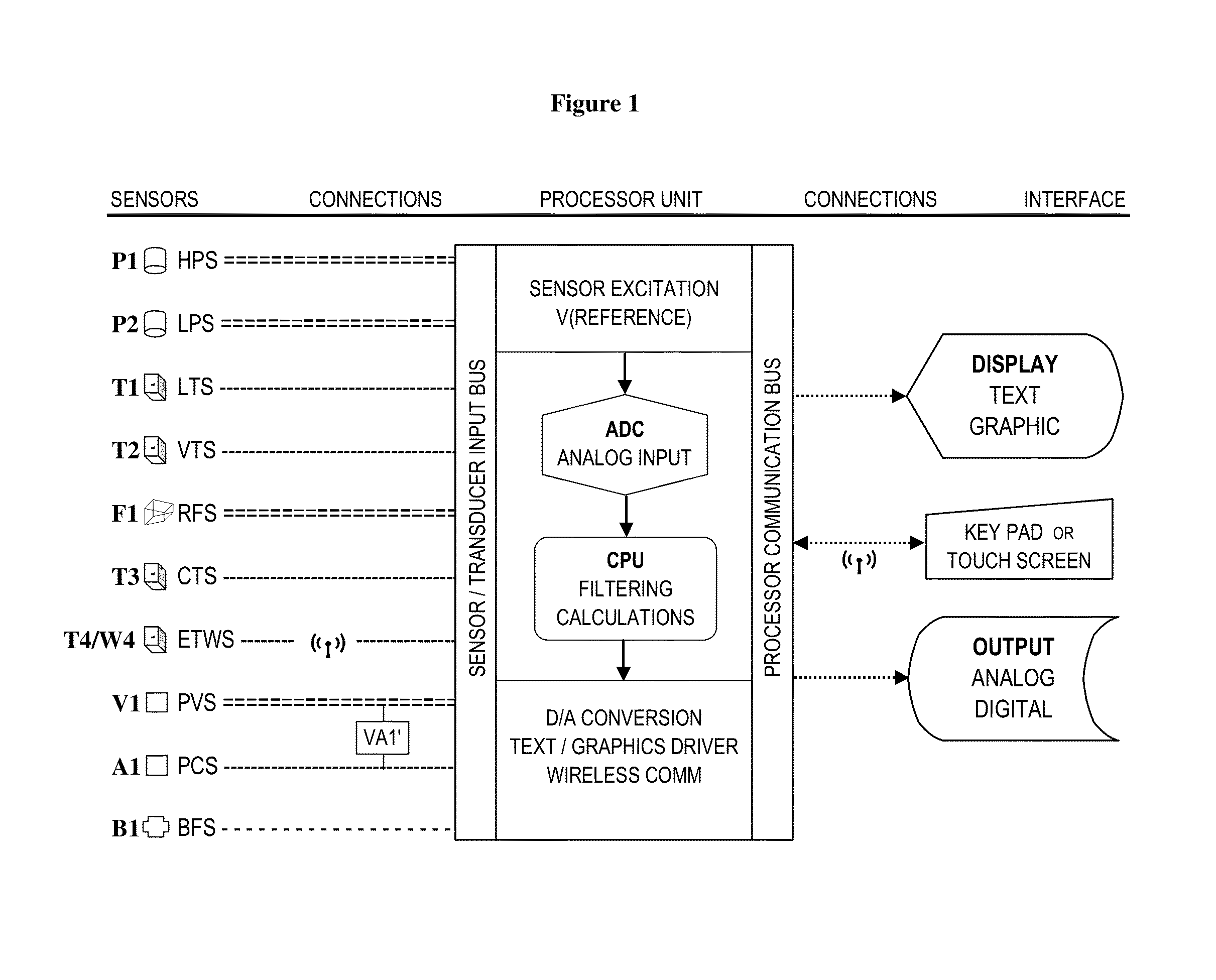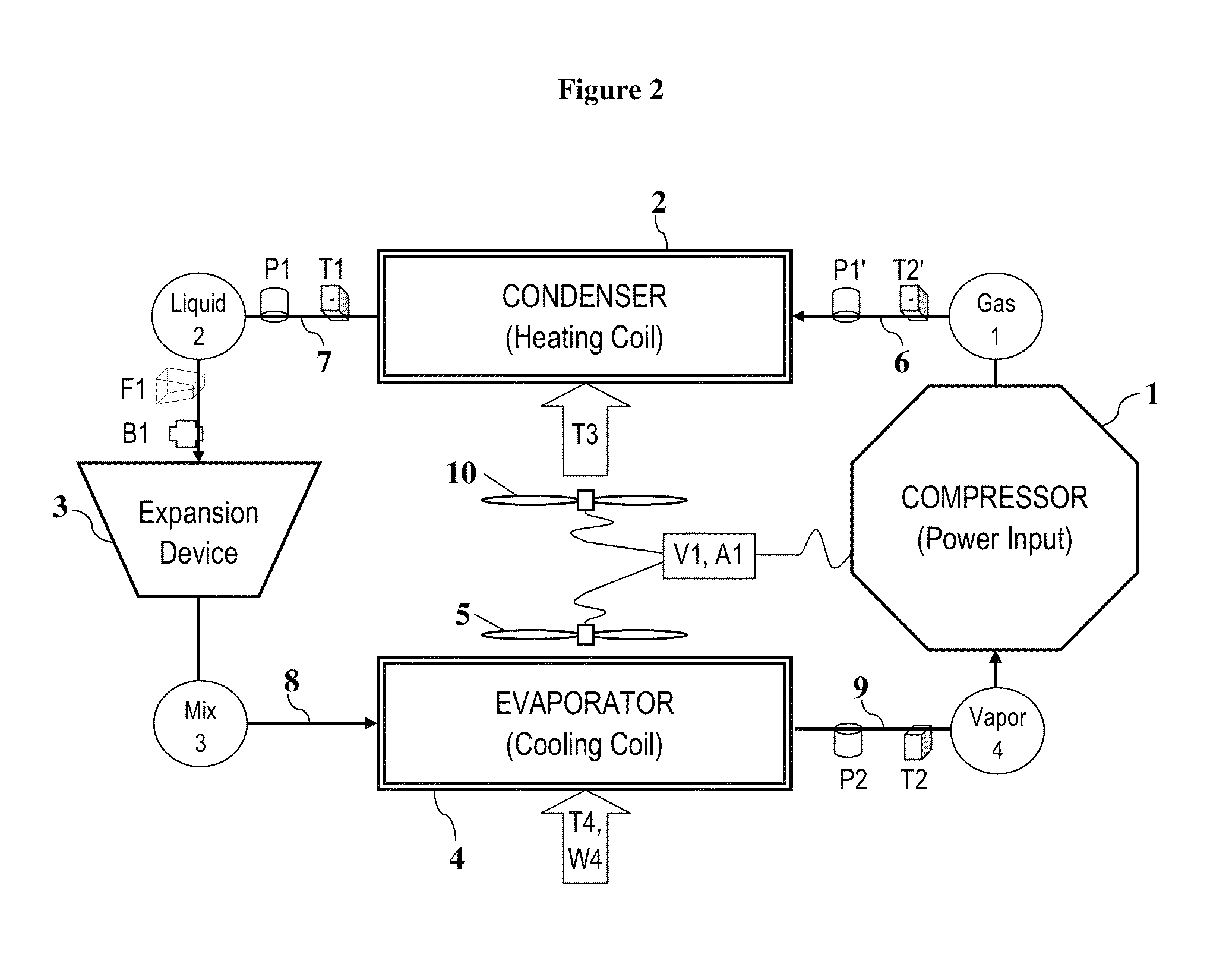Energy efficiency ratio meter for direct expansion air-conditioners and heat pumps
a technology of energy efficiency ratio and meter, which is applied in the direction of measuring using digital techniques, lighting and heating apparatus, instruments, etc., can solve the problems of increasing the operating cost, increasing the power consumption, and lowering the capacity of the system, etc., to achieve rapid and direct evaluation of the energy efficiency performance of any operating unit, maximize eer, and reduce the effect of labor intensity
- Summary
- Abstract
- Description
- Claims
- Application Information
AI Technical Summary
Benefits of technology
Problems solved by technology
Method used
Image
Examples
Embodiment Construction
[0016]A block diagram of the preferred process for obtaining the output values and signals from the input sensors, and the signal pathways between the sensors, the processor unit, and the display and signal outputs and connections is shown in FIG. 1. Nine sensors and one optional sensor are arranged vertically along the processor input bus; their functions and connections are as follows. Note that T3, T4, and W4 can be optional if the user does not desire EER, IEER and COP output at ANSI / AHRI Standard 340 / 360 test conditions. Transducer T4W4 is the evaporator air inlet temperature and humidity sensor (ETWS). Signals from transducer T4W4 are hardwired to an analog input when attached to a packaged air-conditioner, refrigerator or heat pump, or via a 2.4 GHz IEEE 802.15.4 RF wireless transmission, or Bluetooth or other wireless transmission as would be known to one skilled in the art, to the processor unit input when the transducer must be remotely positioned some distance away in the...
PUM
 Login to View More
Login to View More Abstract
Description
Claims
Application Information
 Login to View More
Login to View More - R&D
- Intellectual Property
- Life Sciences
- Materials
- Tech Scout
- Unparalleled Data Quality
- Higher Quality Content
- 60% Fewer Hallucinations
Browse by: Latest US Patents, China's latest patents, Technical Efficacy Thesaurus, Application Domain, Technology Topic, Popular Technical Reports.
© 2025 PatSnap. All rights reserved.Legal|Privacy policy|Modern Slavery Act Transparency Statement|Sitemap|About US| Contact US: help@patsnap.com



